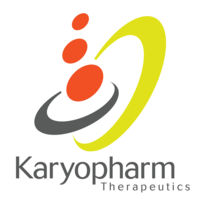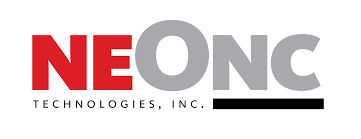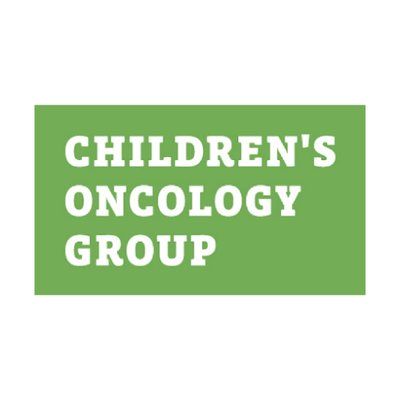预约演示
更新于:2025-05-07
Childhood Central Nervous System Neoplasm
儿童中枢神经系统肿瘤
更新于:2025-05-07
基本信息
别名 CNS tumor, childhood、CNS tumor, pediatric、Childhood CNS Neoplasm + [29] |
简介 A benign or malignant neoplasm of the brain, spinal cord, or meninges occurring in children. Representative examples include posterior fossa astrocytoma, optic pathway glioma, medulloblastoma, ependymoma, and craniopharyngioma. |
关联
16
项与 儿童中枢神经系统肿瘤 相关的药物作用机制 MEK1抑制剂 [+1] |
非在研适应症 |
最高研发阶段批准上市 |
首次获批国家/地区 美国 |
首次获批日期2020-04-10 |
作用机制 ACADS inhibitors [+1] |
非在研适应症 |
最高研发阶段批准上市 |
首次获批国家/地区 美国 |
首次获批日期2019-07-03 |
靶点 |
作用机制 VEGF-A抑制剂 [+1] |
原研机构 |
最高研发阶段批准上市 |
首次获批国家/地区 美国 |
首次获批日期2004-02-26 |
66
项与 儿童中枢神经系统肿瘤 相关的临床试验NCT06357377
An Open Label, Phase 1b Safety, Dose-finding, Brain Tumor Delivery, and Pharmacokinetics Study of Intranasal NEO100 in Patients with Pediatric-type Select Brain Tumors
This is an open label, Phase 1b safety, dose-finding, brain tumor delivery, and pharmacokinetics study of intranasal NEO100 in patients with pediatric-type diffuse high grade gliomas. Patients will receive IN NEO100 that will follow a dose titration design, followed by a standard dose escalation design to establish safety. Brain tumor delivery of NEO100 will be confirmed in each disease sub-type by surgical resection/needle biopsy only if clinically indicated and scheduled for clinical purposes and testing with residual tissue for NEO100 and the major metabolite of NEO100 (Perillic Acid).
开始日期2024-12-01 |
申办/合作机构 |
NL-OMON56959
ERNIE: Evaluating Response to Individualized Neuropsychological Intervention for Children with Brain Tumors - ERNIE study
开始日期2024-11-12 |
NCT06054295
Somatic Mosaicism in Twins Discordant for Childhood Cancer: a Pilot Study
Somatic mosaicism in cancer associated genes is one potential explanation for discordance in childhood cancer that has not been fully explored to date. This pilot study will focus on twins with central nervous system (CNS) tumors who are identified through the Children's Oncology Group's Project: EveryChild (PEC) registry or volunteer.
开始日期2024-06-03 |
申办/合作机构 |
100 项与 儿童中枢神经系统肿瘤 相关的临床结果
登录后查看更多信息
100 项与 儿童中枢神经系统肿瘤 相关的转化医学
登录后查看更多信息
0 项与 儿童中枢神经系统肿瘤 相关的专利(医药)
登录后查看更多信息
1,035
项与 儿童中枢神经系统肿瘤 相关的文献(医药)2025-12-01·Child's Nervous System
Long-term epidemiological trends in (primary) pediatric central nervous system tumors: a 25-year cohort analysis in Western Mexico
Article
作者: Arredondo-Navarro, Luis Angel ; Bobadilla-Morales, Lucina ; Rodríguez-Machuca, Víctor Ulises ; Bustos-Rodríguez, Felipe De Jesús ; Ramírez-Corona, Juan Antonio ; Gaxiola-Sarmiento, Ana Lucía ; Nuñez-Velasco, Santiago ; Corona-Rivera, Jorge Román ; Corona-Rivera, Alfredo ; Navarro-Martín Del Campo, Regina Mallinalli ; Fernández-Sánchez, David ; Velázquez-Santana, Héctor ; Ángulo-De La Cruz, Eduardo Jahir
2025-06-01·Pediatric Blood & Cancer
Neuropsychological Performance and Its Predictors in the Early Treatment Phase of Non‐CNS Pediatric Cancer
Article
作者: Partanen, Marita ; Aarsen, Femke K. ; Haveman, Lianne M. ; Huisman, Marisa H. ; Grootenhuis, Martha A. ; Sanstra, Sterre ; Bos, Daniëlle P. A.
2025-05-04·International Journal of Radiation Biology
Dosimetric impacts on height development after radiotherapy for intracranial non-germinomatous germ cell tumors
Article
作者: Li, Shaoqun ; Lai, Mingyao ; Li, Juan ; Deng, Guanhua ; Hong, Weiping ; He, Jing ; Zhang, Ping ; Cai, Linbo ; Zhou, Zhaoming ; Wen, Lei ; Zhou, Cheng ; Shan, Changguo ; Hu, Xiaolei ; Zhen, Junjie ; Ding, Jie
23
项与 儿童中枢神经系统肿瘤 相关的新闻(医药)2025-04-10
PHILADELPHIA, April 10, 2025 /PRNewswire/ -- Children's Brain Tumor Network (CBTN) welcomes Hassenfeld Children's Hospital at NYU Langone as a new member institution. Dr. Jessica Clymer, director of the pediatric neuro-oncology program at Hassenfeld Children's Hospital, will serve as CBTN principal investigator.
"My team and I at Hassenfeld Children's Hospital are thrilled to collaborate with other CBTN institutions as we unite our efforts to advance pediatric brain tumor research and provide the best care for our patients and families," said Dr. Clymer.
This partnership with CBTN allows specialists at Hassenfeld Children's Hospital to give children and families affected by brain and spinal cord tumors the option to contribute biological samples to CBTN, with the goal of understanding brain tumor biology through research. This collaboration is essential for advancing pediatric brain tumor research, as no single medical institution can gather enough samples alone to drive meaningful progress in the field.
The pediatric neuro-oncology team sees patients at the Stephen D. Hassenfeld Center for Cancer and Blood Disorders, part of Hassenfeld Children's Hospital in Manhattan, and is one of New York City's oldest pediatric tumor centers. Since 2005, NYU Langone's pediatric brain tumor research has been supported by the Making Headway Foundation. In 2019, the foundation partnered with Hassenfeld Children's Hospital and CBTN by funding a role to support pediatric brain tumor sample management at the center.
"We are so proud to play an important part in this collaboration as it directly connects to our mission of providing care and comfort for children with brain and spinal cord tumors while funding medical research geared to better treatments and a cure," said Daniel Lipka, Executive Director of Making Headway Foundation.
Jena Lilly, Executive Director of the Children's Brain Tumor Network, added, "We're thrilled to welcome Hassenfeld Children's Hospital to CBTN. Together, we are amplifying our efforts to advance pediatric brain tumor research and bring renewed hope to children and families in need of better treatments and brighter futures."
About Children's Brain Tumor Network (CBTN)
CBTN is a global research initiative that accelerates pediatric brain tumor treatments. With 34 member institutions, CBTN has collected over 82,000 biospecimens and enrolled 7,900 participants, creating the largest childhood brain tumor data repository. Its advanced platforms enable real-time collaboration to improve outcomes for children with brain tumors. Learn more at cbtn.org.
Contacts:
Bobby Moulder
[email protected]
(484) 258-8539
Katie Ullman
[email protected]
646-483-3984
SOURCE Children’s Brain Tumor Network
WANT YOUR COMPANY'S NEWS FEATURED ON PRNEWSWIRE.COM?
440k+
Newsrooms &
Influencers
9k+
Digital Media
Outlets
270k+
Journalists
Opted In
GET STARTED
2025-01-17
BOSTON--(
BUSINESS WIRE
)--
Foundation Medicine, Inc.
today announced that it has received approval from the U.S. Food and Drug Administration (FDA) for FoundationOne®CDx to be used as a companion diagnostic for Day One Biopharmaceuticals’ OJEMDA, a type II RAF inhibitor, for the treatment of patients six months of age and older with relapsed or refractory pediatric low-grade glioma (pLGG) harboring a
BRAF
fusion or rearrangement, or
BRAF
V600 mutation. FoundationOne CDx is the first and only companion diagnostic for OJEMDA.
pLGG is the most common brain tumor diagnosed in children.
1,2
In this patient population, a
BRAF
alteration is detected in up to 75 percent of cases. Previously, no FDA-approved treatment options were available targeting tumors harboring BRAF fusions, which represent 80% of BRAF altered patients.
3,4,5,6,7
“Foundation Medicine is proud to partner with Day One to help healthcare providers connect pediatric patients and families with this treatment option,” said Mia Levy, M.D., Ph.D., chief medical officer at Foundation Medicine. “Our high-quality tissue-based companion diagnostic test is uniquely capable of detecting both
BRAF V600
mutations and fusions which enables providers to gain the complete genomic picture of their patient’s tumor and guide treatment decision making.”
Foundation Medicine has sequenced over 2,200 pediatric central nervous system tumors
8
and is the only company to offer both tissue and blood-based comprehensive genomic profiling tests that are approved by the FDA. Using a tissue sample, the FDA-approved FoundationOne CDx test analyzes more than 300 cancer-related genes in a patient’s tumor. Foundation Medicine is the global leader in approved companion diagnostic indications. Foundation Medicine also has 40% of all approved companion diagnostic indications for next-generation sequencing (NGS) testing in the United States and Japan.
9,10
“Historically, pediatric patients with pLGG have faced overwhelming side effects, both near- and long-term, from aggressive treatments like chemotherapy and radiation,” said David Arons, president and chief executive officer at the National Brain Tumor Society. “We are thrilled to see that there are now additional treatment options available for these children, as well as an FDA-approved companion diagnostic test to help identify more patients who may benefit from Day One’s therapy.”
Foundation Medicine and FoundationOne
®
are registered trademarks of Foundation Medicine, Inc.
About Foundation Medicine: Your Essential Partner in Cancer Care
Foundation Medicine is a pioneer in molecular profiling for cancer, working to shape the future of clinical care and research. We collaborate with a broad range of partners across the cancer community and strive to set the standard for quality, scientific excellence, and regulatory leadership. Our deep understanding of cancer biology helps physicians make informed treatment decisions for their patients and empowers researchers to develop new medicines. Every day, we are driven to help our partners find answers and take action, enabling more people around the world to benefit from precision cancer care. For more information, please visit us on
www.FoundationMedicine.com
and follow us on
LinkedIn
and
X
.
About FoundationOne®CDx
FoundationOne®CDx is a next-generation sequencing based
in vitro
diagnostic device for detection of substitutions, insertion and deletion alterations (indels), and copy number alterations (CNAs) in 324 genes and select gene rearrangements, as well as genomic signatures including microsatellite instability (MSI) and tumor mutational burden (TMB) using DNA isolated from formalin-fixed, paraffin-embedded (FFPE) tumor tissue specimens. FoundationOne CDx is for prescription use only and is intended as a companion diagnostic to identify patients who may benefit from treatment with certain targeted therapies in accordance with their approved therapeutic product labeling. Additionally, FoundationOne CDx is intended to provide tumor mutation profiling to be used by qualified health care professionals in accordance with professional guidelines in oncology for patients with solid malignant neoplasms. Use of the test does not guarantee a patient will be matched to a treatment. A negative result does not rule out the presence of an alteration. Some patients may require a biopsy. For a full list of targeted therapies for which FoundationOne CDx is indicated as a companion diagnostic, please visit
www.F1CDxLabel.com
.
1
Ostrom, Q. T. et al. CBTRUS Statistical Report: Primary Brain and Other Central Nervous System Tumors Diagnosed in the United States in 2012-2016. Neuro Oncol 21, V1–V100 (2019).
2
Ryall, S., Tabori, U. & Hawkins, C. Pediatric low-grade glioma in the era of molecular diagnostics. Acta Neuropathologica Communications 2020 8:1 8, 1–22 (2020).
3
Sun Y, Alberta JA, Pilarz C. A brain-penetrant RAF dimer antagonist for the noncanonical BRAF oncoprotein of pediatric low-grade astrocytomas.
Neuro Oncol
. 2017;19(6):774-785. doi:10.1093/neuonc/now261
4
Penman CL, Faulkner C, Lowis SP, Kurian KM. Current understanding of BRAF alterations in diagnosis, prognosis, and therapeutic targeting in pediatric low-grade gliomas.
Front Oncol
. 2015;5:54. doi:10.3389/fonc.2015.00054
5
Ryall S, Zapotocky M, Fukuoka K, et al. Integrated molecular and clinical analysis of 1,000 pediatric low-grade gliomas.
Cancer Cell
. 2020;37(4):569-583.e5. doi:10.1016/j.ccell.2020.03.011
6
Cohen AR. Brain tumors in children.
N Engl J Med
. 2020; 386(20):1922-1931. doi:10.1056/NEJMra2116344
7
Lassaletta A, Zapotocky M, Mistry M, et al. Therapeutic and prognostic implications of BRAF V600E in pediatric low-grade gliomas.
J Clin Oncol
. 2017;35(25):2934-2941. doi:10.1200/JCO.2016.71.8726
8
FoundationCore® Database, March, 2024
9
List of Cleared or Approved Companion Diagnostic Devices (In Vitro and Imaging Tools).
https://www.fda.gov/medical-devices/in-vitro-diagnostics/list-cleared-or-approved-companion-diagnostic-devices-in-vitro-and-imaging-tools
.
10
List of Vitro Companion Diagnostics or Medical Devices (CDx Products) Approved in Japan.
https://www.pmda.go.jp/files/000264514.pdf
诊断试剂
2024-10-29
Ongoing international oncology collaboration works to empower health care workers and save lives across diverse resource environments.
Accra, GHANA, Oct. 29, 2024 /PRNewswire/ -- International oncology experts are gathering in Accra, Ghana for a series of meetings beginning today, to update cancer treatment recommendations in the NCCN Harmonized Guidelines™ for Sub-Saharan Africa. This is the latest event from a longstanding collaboration between the African Cancer Coalition (ACC), American Cancer Society (ACS), and National Comprehensive Cancer Network® (NCCN®), and the Clinton Health Access Initiative (CHAI) that collectively form the group Allied Against Cancer. Together, the organizations are focused on providing context-appropriate, evidence-based cancer care strategies that address the unique challenges faced across the region.
Continue Reading
NCCN Harmonized Guidelines for Sub-Saharan Africa available for free at NCCN.org/harmonized.
The NCCN Harmonized Guidelines™ for Sub-Saharan Africa are free resources for optimizing and standardizing cancer care across the region. They are available at NCCN.org/harmonized or via the Virtual Library of NCCN Guidelines® App.
"The Sub-Saharan Africa region is dealing with a rising rate of cancer incidences. Standardizing care based on the latest evidence-based expert consensus-driven recommendations helps ensure consistency in treatment and enables better planning for how to use available resources," said
Dr. Henry Ddungu, Senior Consultant, Hematology/Oncology; African Cancer Coalition. "We can ensure people with cancer receive the most effective treatment by harnessing local expertise combined with global best practices."
During the meeting, the updates to the NCCN Harmonized Guidelines™ for Sub-Saharan Africa will focus on caring for blood malignancies and children's cancers, including:
Acute Lymphoblastic Leukemia
Acute Myeloid Leukemia
B-cell Lymphomas
Chronic Lymphocytic Leukemia/Small Lymphocytic Lymphoma
Chronic Myeloid Leukemia
Hodgkin Lymphoma
Multiple Myeloma
Pediatric Acute Lymphoblastic Leukemia
Pediatric Aggressive B-Cell Lymphomas
Pediatric Central Nervous System Cancers
Waldenstrom's Macroglobulinemia/Lymphoplasmacytic Lymphoma
"Since the launch of Allied Against Cancer and publication of the first NCCN Harmonized Guidelines™ for Sub-Saharan Africa in 2017, we have grown to include guidelines covering more than 90% of adult cancer incidences, and most pediatric cancers," said
Anu Agrawal, MD, Vice President, Global Cancer Support, American Cancer Society (ACS). "We are proud of the work we've accomplished collaboratively and excited to see continued progress in cancer care across the region."
"As we strive for health equity across the globe, it is vital that health care providers are equipped with the best tools and resources to deliver optimal care for a variety of different settings," said
Crystal S. Denlinger, MD, Chief Executive Officer, NCCN. "These guidelines are a critical step for helping cancer care professionals stay current on the latest advancements in treatment. They provide a roadmap for ideal options while also taking into account the challenges that exist when delivering care in resource limited settings."
Dr. Denlinger was joined by
NCCN's Chief Medical Officer, Wui-Jin Koh, MD, along with the following NCCN Clinical Practice Guidelines in Oncology (NCCN Guidelines®) Panel leadership:
Ranjana H. Advani, MD, Stanford Cancer Institute
Jessica K. Altman, MD, Robert H. Lurie Comprehensive Cancer Center of Northwestern University
Hiroto Inaba, MD, PhD, St. Jude Children's Research Hospital/The University of Tennessee Health Science Center
The NCCN Harmonized Guidelines™ offer color-coded tiers of treatment recommendations based on resource availability. They cover more than 40 different cancer types, plus screening, supportive care, and specific population concerns. They have been utilized nearly 70,000 times since 2017 and have been endorsed by the Federal Ministries of Health and leading cancer centers in Ethiopia, Liberia, Malawi, Nigeria, Tanzania, Uganda, and Zambia.
Learn more about Allied Against Cancer's collaborative work to improve cancer care in Sub-Saharan Africa at alliedagainstcancer.org. Visit NCCN.org/global for other free international cancer prevention and treatment resources.
About the National Comprehensive Cancer Network
The National Comprehensive Cancer Network® (NCCN
®) is a not-for-profit alliance of
leading cancer centers devoted to patient care, research, and education. NCCN is dedicated to improving and facilitating quality, effective, equitable, and accessible cancer care so all patients can live better lives. The NCCN Clinical Practice Guidelines in Oncology (NCCN Guidelines
®) provide transparent, evidence-based, expert consensus recommendations for cancer treatment, prevention, and supportive services; they are the recognized standard for clinical direction and policy in cancer management and the most thorough and frequently-updated clinical practice guidelines available in any area of medicine. The NCCN Guidelines for Patients® provide expert cancer treatment information to inform and empower patients and caregivers, through support from the
NCCN Foundation®. NCCN also advances continuing education, global initiatives, policy, and research collaboration and publication in oncology. Visit
NCCN.org for more information.
Media Contact:
Rachel Darwin
267-622-6624
[email protected]
Photo -
Logo -
WANT YOUR COMPANY'S NEWS FEATURED ON PRNEWSWIRE.COM?
440k+
Newsrooms &
Influencers
9k+
Digital Media
Outlets
270k+
Journalists
Opted In
GET STARTED
ASCO会议
分析
对领域进行一次全面的分析。
登录
或

生物医药百科问答
全新生物医药AI Agent 覆盖科研全链路,让突破性发现快人一步
立即开始免费试用!
智慧芽新药情报库是智慧芽专为生命科学人士构建的基于AI的创新药情报平台,助您全方位提升您的研发与决策效率。
立即开始数据试用!
智慧芽新药库数据也通过智慧芽数据服务平台,以API或者数据包形式对外开放,助您更加充分利用智慧芽新药情报信息。
生物序列数据库
生物药研发创新
免费使用
化学结构数据库
小分子化药研发创新
免费使用





